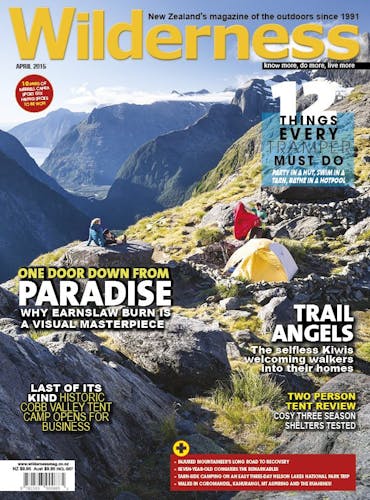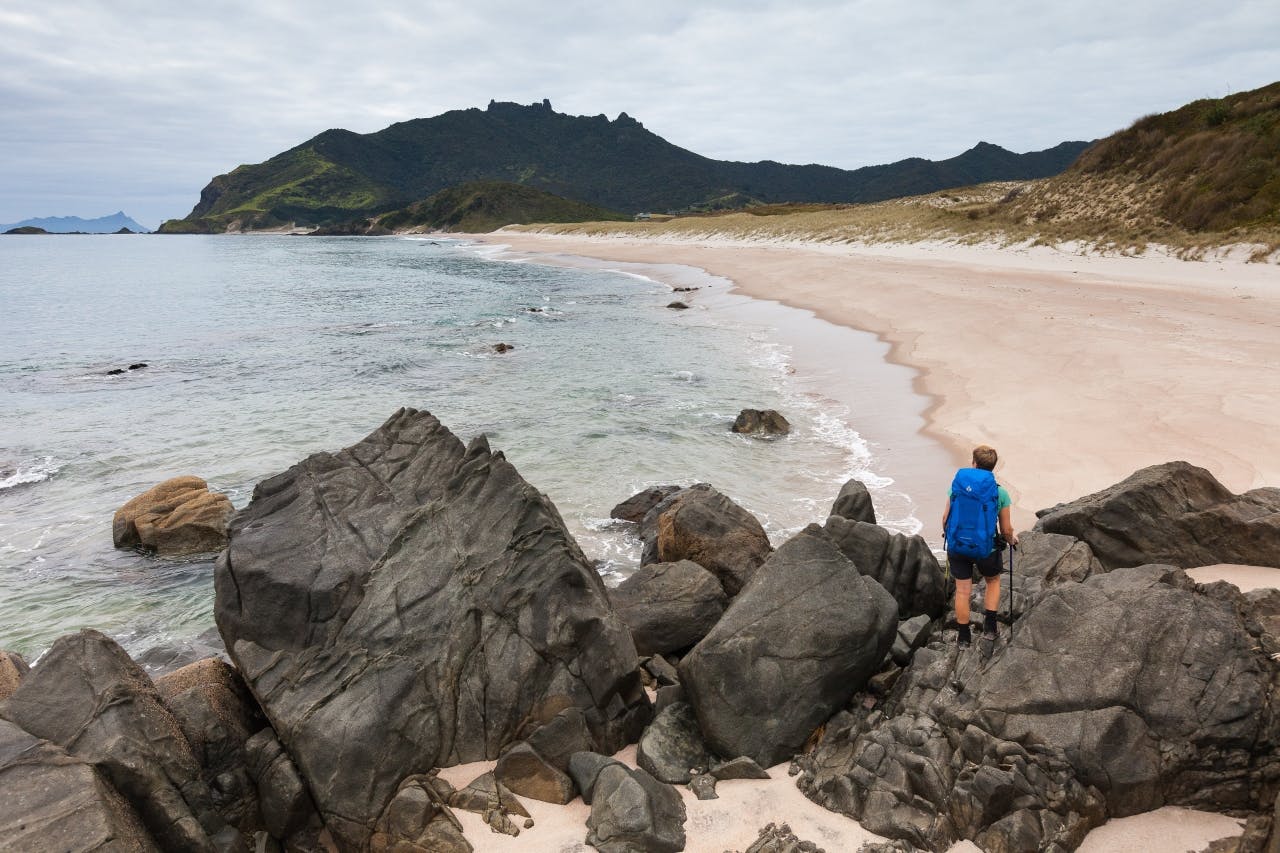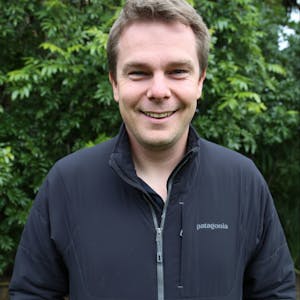Accounts from those who have walked the Te Araroa Trail are teeming with tales of selfless souls offering a bed, hot shower, meal, or tent space. Matthew Pike asks these ‘trail angels’ why they do it.
A new species has recently been discovered. The species looks vaguely human, but its hair is particularly long and scruffy. The male has a beard a 19th century lumberjack would be proud of. Its clothes have the faded grandeur of extreme use and its odour is one that requires a wide berth, though the species has a positive, determined nature which commands admiration.
The behavioural patterns typically consist of walking hour after hour, day after day, with a giant pack resting on its back that normally clunks with every step. Often solitary, it follows a pre-determined trail bisecting the country. This behaviour achieves nothing but edging the species closer to the ultimate goal of reaching a windy headland with curious yellow signs pointing to out-of-sight destinations around the world.
The species is, of course, the Te Araroa Trail walker.
If one enters your town, don’t be afraid. Whereas humans are now accustomed to beds, coffee and hot meals, the Te Araroa Trail (TA) walker will be overcome with gratitude if you so much as offer a space on your lawn. You can then watch from your kitchen window as they set up their fabric home and primitive cooking set, and tuck in to their staple diet of two-minute noodles.
This bizarre species is becoming more common and is normally a summer visitor. Official estimates (based on sightings) are that around 180 were resident in New Zealand over the spring and summer 2014/15, compared to around 100 the year before.
To those who live along the trail, spotting the species is now a frequent occurrence. And as a nation we seem to be warming to these hairy, smelly, yet polite, creatures. In fact, a highlight of many a TA walker is the generosity of total strangers.
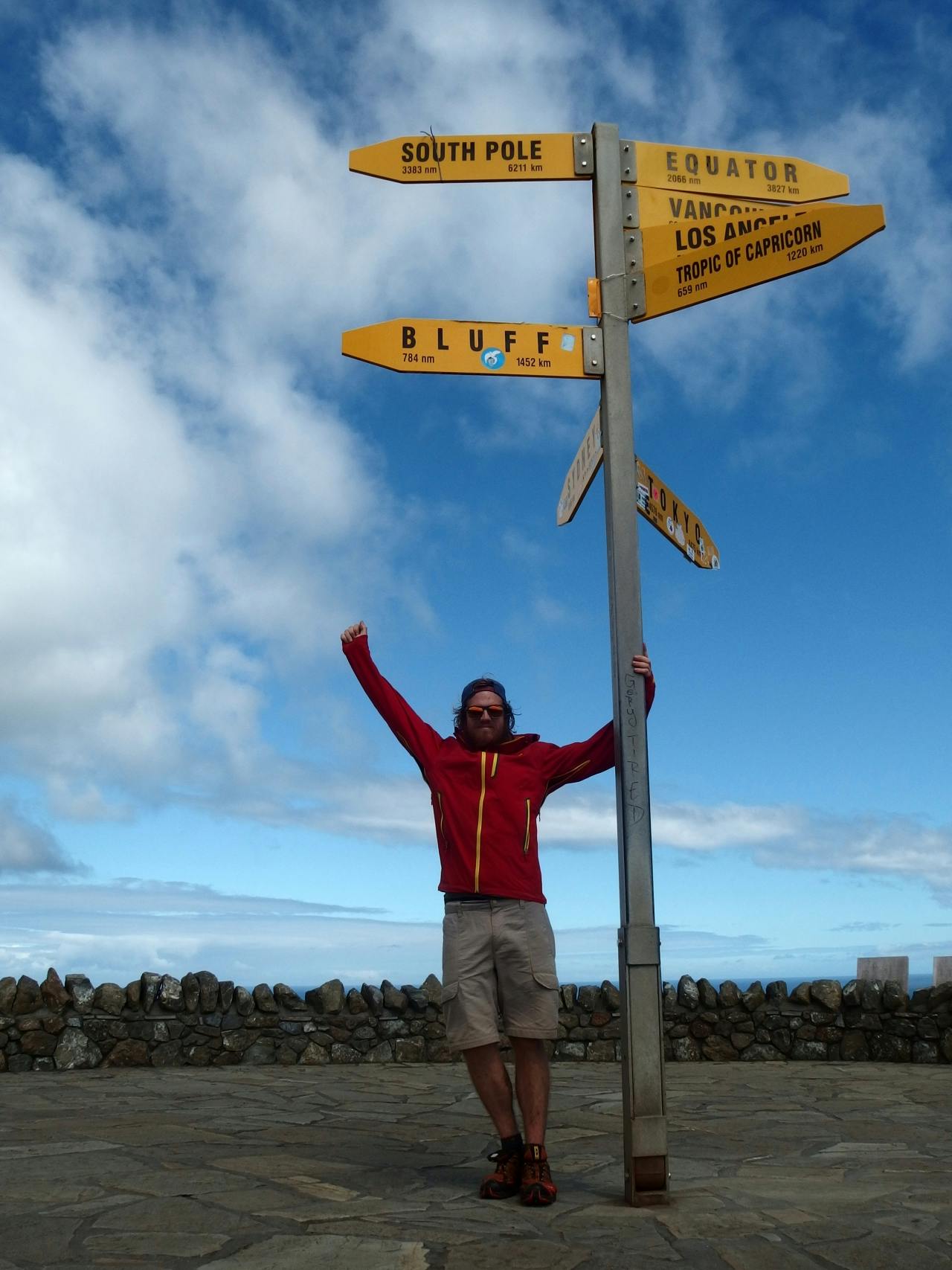
Adam Chambers completes his south to north TA hike, arriving at Cape Reinga.
Naresh Kumar, who famously completed the trail in sandals in just 87 days, has a list of people who, to his utter bewilderment, invited him into their lives.
There’s the lady who shared her sandwich with him at the side of the road, the man who spared him from spending the night in a public toilet and instead plied him with beef stir fry, wine and cheese and let him relax in his Jacuzzi. There’s also the woman who cooked him a huge meal at 10.30pm and made him feel like he was at his grandmother’s house.
Another TA walker who began the tramp fresh-faced before developing a certain caveman quality is Adam Chambers. He took more than 10 months to complete the trail south to north last year due to suffering a dislocated shoulder, badly damaged knee and broken ankle on the way. The Australian tramper also deviated frequently from the trail, at one stage completing a traverse of the entire Ruahine Range.
When he broke his ankle in the Waikato, when half-landing his foot on a plank of wood hidden beneath grass, he was taken from hospital by someone he had never met. Hamiltonian Sam Taylor had also been walking the trail from south to north, initially several weeks behind.
She made contact with Chambers on Facebook and, by the time he’d broken his ankle, Taylor had arrived in Hamilton and been offered a job too good to refuse, so stayed put without finishing the trail.
Though they’d never met, Chambers called Taylor from Hamilton hospital and spent a week with her and her parents before they both moved into a new houseshare in which he stayed for two months before continuing to Cape Reinga.
“Her housemates didn’t know I was coming but were incredibly accepting of my situation. We’re now really good friends,” recalls Chambers, who’s raising funds for The Fred Hollows Foundation.
“Some of the most incredible generosity on the trail was from people I’d never met,” he says, recounting how on another occasion near Puhoi, north of Auckland, he was intently reading the map, unaware that a woman and her dog were approaching to within three metres of him. “Oh, you’re a person!” said the woman.
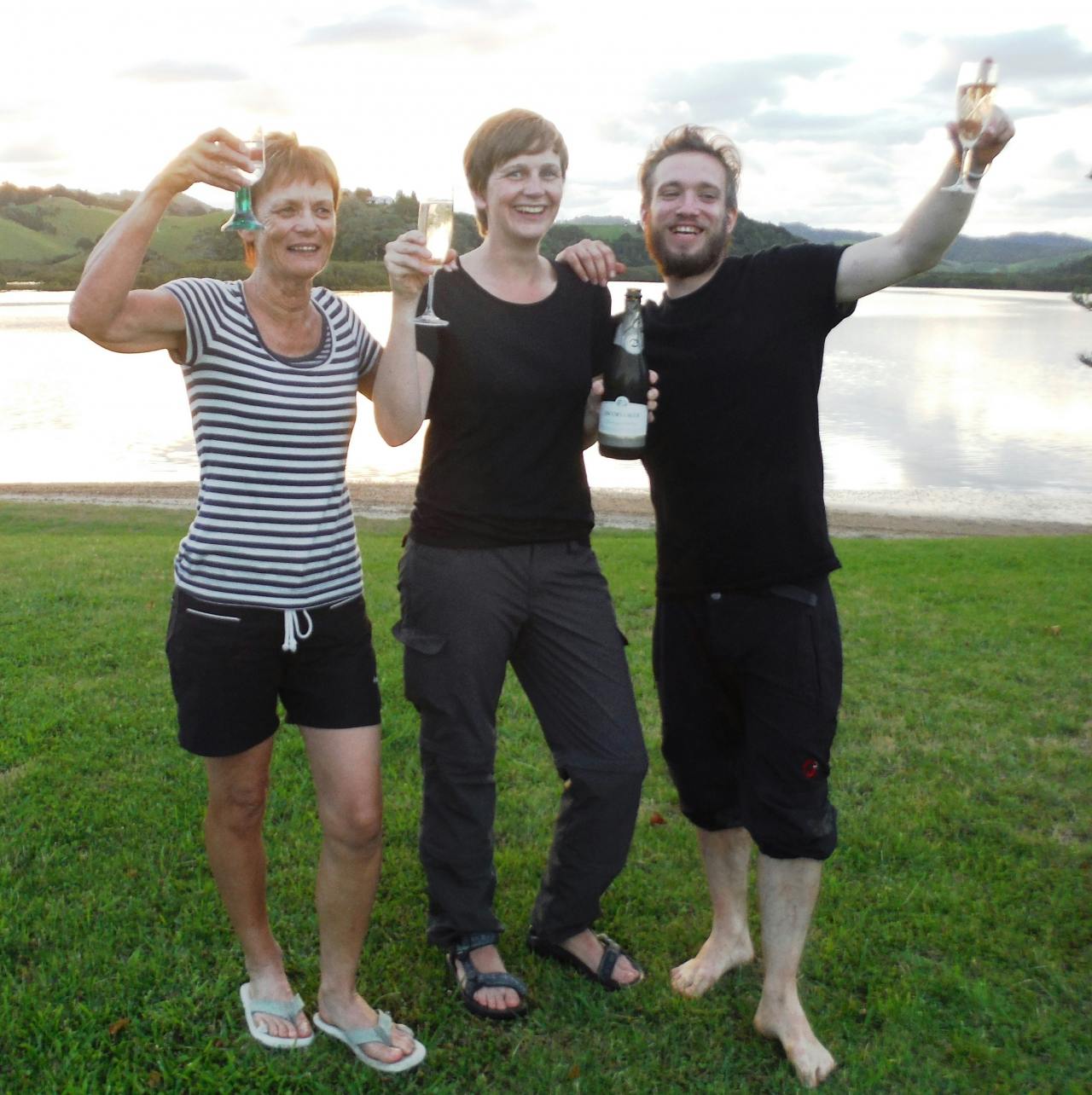
Trampers Helen, Hana and Simon were treated to a bottle of champagne to celebrate Whananaki Holiday Park’s 100th TA.
“She was almost completely blind,” explains Chambers. “She saw the orange rain cover over my pack and thought I was a road work sign.
“We had a short conversation in which I asked her the best place to camp and she said to come and meet her husband. They ended up feeding me heaps, and giving me a bed and a hot shower. It was really fortunate because there was a huge thunderstorm overnight.”
There was also the couple who live near Palmerston North who Chambers had met once in the Takitimu Mountains. When Chambers’ knee packed in south of the Tararuas, he gave them a call and they not only put him up for two weeks, but drove him to physio whenever he needed.
Speak to almost any Te Araroa Trail walker and they’ll tell you about the ‘trail angels’ who appear from nowhere and turn a miserable day into one of their favourite.
So who are these people and why would they be so generous to someone they’d never met?
“We like people, and you have to put yourself out there and think what it would be like if you were walking through with nowhere to stay,” says Melva Ward, who runs The Riverbank Homestay and B&B in Ngunguru, Northland, with her husband Hilton. “Travelling’s hard enough without worrying where to put your head for the night.”
The Wards have set aside space for campers on their lawn. There’s a small sign telling TA walkers they can set up their tent there; one that’s often a welcome surprise.
“One chap saw our sign and breathed a sigh of relief, he was so happy,” says Melva.
The Wards have since built a long drop toilet in their garden for trampers and allow them use of water from their tank. If there’s no-one staying at the B&B, they’ll often invite walkers up for a cup of tea and have been known to let trampers sleep on their floor. Hilton will even drive trampers the 6km to the next stretch of track on his way to work. They don’t charge for their generosity but campers are invited to make a donation.
“I think New Zealanders still don’t have a fear of people and are very happy to welcome anyone into our homes,” says Melva. “If the track becomes really popular, maybe more people along the route will say ‘you can camp here’.”
Two more trail angels are Lance and Brigitte Smith, of Puhoi, north of Auckland. They have a loft above their garage with two double beds, as well as garden space to put up a tent. As the couple are often away, they never guarantee availability but, if they can help, they will.
“If you like meeting different people it’s a great thing to do,” says Lance, who runs a window cleaning service. “The walkers have interesting stories and it’s great hearing about their lives. We’ve made some good friends and people often come back to see us afterwards.”
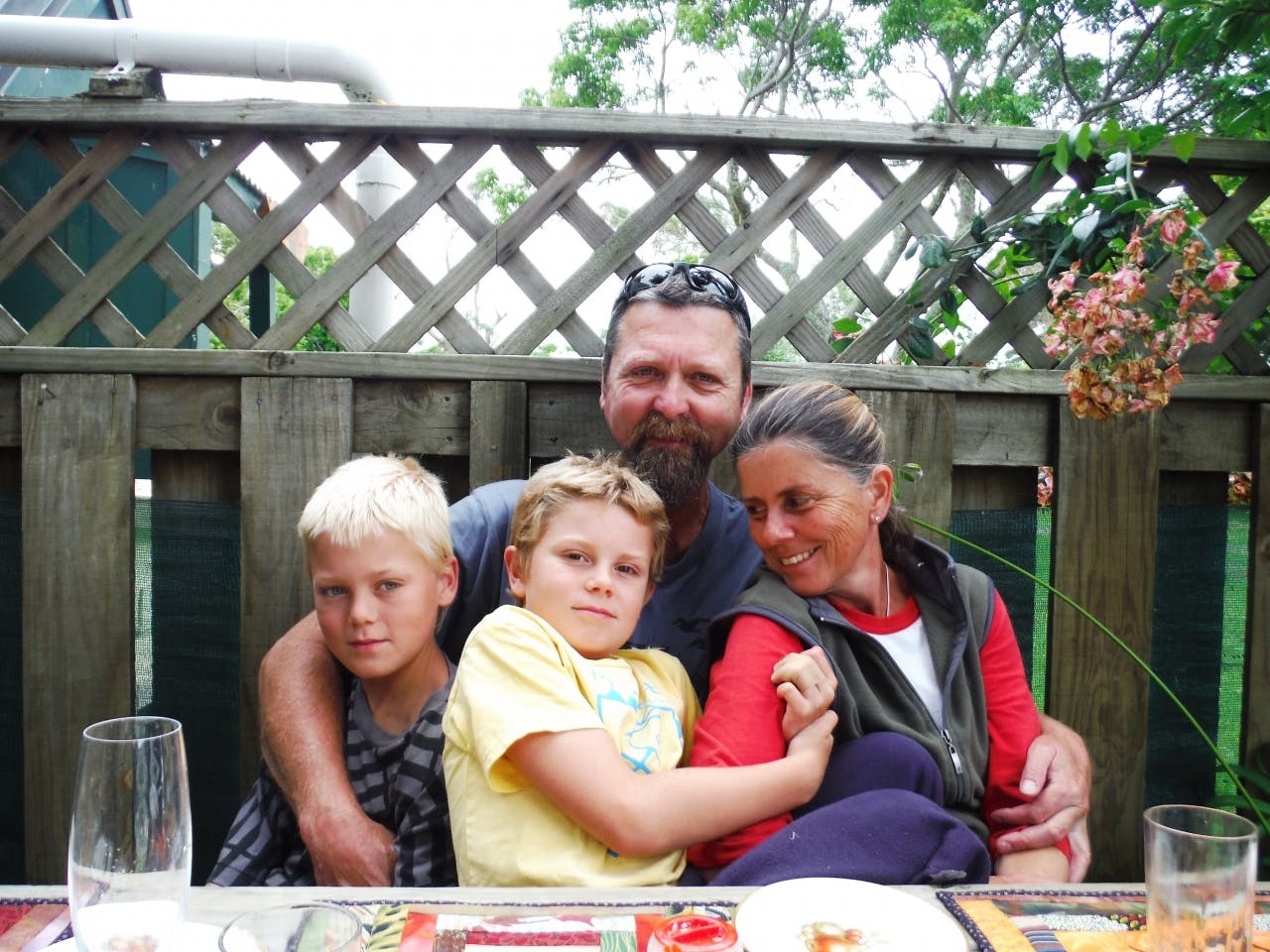
Whananaki Holiday Park owners Matthew and Tracy Hare with their boys William and Luke.
Smith says numbers are up this year and locals are now more familiar to the sight of hairy trampers emerging from the forest – a sight that could become ever more frequent as the years roll on.
“From what I hear the TA is all the talk on trails over in America,” says Smith. “Word is going around that ‘you have to do this trail’. It’s different to what they’ve got over there; it’s very diverse.”
One who’s keeping a close count of numbers is Matthew Hare, who took over Whananaki Holiday Park, Northland, in May last year after moving from Cape Town, South Africa. Hare had never heard of the TA until July, when he saw his first bedraggled adventurer.
“He looked shattered,” said Hare. “He explained he had recently left Cape Reinga and had just been caught in a storm. I thought he was shell-shocked, he was very quiet.”
After this, Hare developed a fascination with those attempting the trail; bemused by their masochism but in awe of their tales. “I hate walking – it’s why I’ve got a car – but I think these guys are incredible. I really admire them for what they’re doing.”
Hare recalls a Kiwi chap who had completed a Himalayan trail, then quit his job after three months to walk the TA. Another man, 64-years-old, arrived at the office clean shaven, with a collared shirt and looking pristine. “He looked like he’d parked his car outside,” says Hare. “But he told me that day he’d walked 43km!”
The trail bottlenecks at Hare’s campground which is situated next to the Southern Hemisphere’s longest footbridge – 395m over the Whananaki Inlet and essential for every TA walker to cross. He’s had more than 100 TA walkers stay since arriving and enjoys putting their photos and stories on the holiday park’s Facebook page.
Hare always makes sure there’s space for trampers and gives those walking the TA special discounts such as $12pp for a site (normally $15) with free Wi-Fi (normally $5), free hot shower (normally 50c) and $2 laundry (normally $4). He even has a spare hut called the Naki’d Inn which is TA exclusive for $15pp – a godsend for those who arrive wet and miserable.
Hare believes it’s important businesses don’t take advantage when numbers increase. “I hope people don’t want to start charging them a fortune,” he says. “Higher prices would mean more would want to camp in the bush or on a farm and this puts them in danger of upsetting farmers. People must be quite careful.”
Most examples of kind heartedness towards trampers tend to be from the north of the country – a fact TA chief executive officer Rob Wakelin attributes to the nature of the trail.
“In the north, you’re in regular contact with populated areas so there’s far more likelihood of crossing paths,” he explains. “The South Island, particularly the top half, is more remote with long stretches of wilderness.”
Wakelin finds it heartwarming to hear so many stories from walkers of being treated like royalty by the locals. “In rural areas, walkers may tap on the door to ask if they can fill their water bottle or pitch a tent and the owner says ‘don’t be silly; we’ve got a bed, come and have something to eat’. It shows there are bloody good people out there.”
Wakelin says he gets emails every week from people wanting to put their details on the TA website for walkers to get in touch. He said it creates a fantastic experience for the tramper, and the Kiwi mentality makes it commonplace.
“It’s in the Kiwi culture to be hospitable. A lot of us have travelled ourselves – on my OE people took me in and created the best experience. We feel we want to do the same for others.”
Businesses too, explains Wakelin, often go beyond the call. Several holiday parks, backpackers and lodges will hold food parcels for walkers in advance or will even shop for supplies so they can continue without delay. Matthew Hare from Whananaki Holiday Park shared a bottle of champagne with the 99th, 100th and 101st TA trampers to stay in the campground, who all arrived on the same night.
We live in a commercial age, where all too often money talks louder than goodwill. This may be true in many walks of life, but the walk from Cape Reinga to Bluff seems to provide a different experience altogether.
Tales of kindness, for no reason other than the joy of helping others, have added to the legend of the trail overseas and will no doubt inspire many more to walk it in the future.





